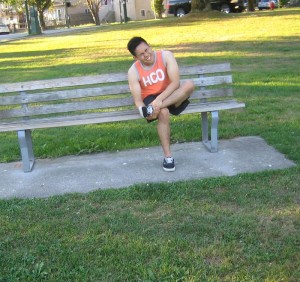A heel spur is a bony extension of the calcaneus bone found in the heel region. It is due to chronic tenderness at the site of insertion of soft tissue ligaments in the area. Heel spurs can develop at the back of the heel, under the heel and beneath the sole of the foot. Heel spurs that develop at the back of the heel is associated with the Achilles tendon inflammation and causes pain and tenderness at the back of the heel that becomes severe especially when pushing off the ball of the foot.
A heel spur is caused by repetitive activities such as running or dancing or develop due to plantar fasciitis which is inflammation of the ligaments or plantar fascia found on the bottom of the foot.
What are the causes?
- Strain injury on the tissues and tendons that are connected to the heel bone or calcaneus
- Inflammatory diseases that include arthritis and ankylosing spondylitis.
Symptoms of a heel spur

- Tenderness of the tissues adjacent to the spur such as on the bottom or the back of the heel
- Difficulty in walking, standing and running especially on barefoot on hard surfaces.
Treatment
- Apply an ice pack on the affected heel for at least 10-15 minutes at least 2 times every day.
- Use the prescribed over-the-counter medications for pain such as acetaminophen or ibuprofen to lessen the pain and inflammation.
- Take plenty of rest at least for a week. Avoid performing activities that cause pain in the area to prevent making the condition worse. Perform gentle exercises such as riding a bike or swimming while the heel spur is still in the healing process.
- Wear night splints while sleeping to stretch the plantar fascia.
- Seek the help of a physical therapist for some exercises that will strengthen and lengthen the plantar fascia.
- Use orthotic inserts for shoes that includes heel cups that aligns the bones in the foot and for cushioning of the heel and insoles.
Tips
- Treatment for a heel spur takes a long time. The person still experiences pain for several months before the heel spur totally heals.
- Avoid being overweight to lower the risk of developing a heel spur.
FACT CHECK
https://www.healthline.com/health/heel-spurs
https://www.medicinenet.com/heel_spurs/article.htm
https://www.webmd.com/pain-management/heel-spurs-pain-causes-symptoms-treatments#1